Make a little difference for the Arakawa River Cleanup
Many different people pick up litter and think about environmental issues, such as trash dumped in and around the river, water quality and nature restoration, in different parts of the river beds, in order to bring back nature to the basin.
The Arakawa River Clean-aid Forum is a Specified Nonprofit Corporation, registered at the Metropolitan Government in Japan. It is run by “participating organizations” (municipalities, businesses, schools, civic groups, and so on) that gather participants and organize volunteer cleanup activities in respective cleanup sessions (areas), mainly during Arakawa River Clean-aid Months in Autumn.
These activities take place in a total of 150 different areas, from upstream Chichibu City to East Beach (Higashi Nagisa) of Tokyo Bay, and involve more than 10 thousand participants each year.
The Arakawa Clean-aid Forum, an NPO, strives to expand the network of people who are aware of the importance of protecting the environment of the river, as well as the environment of the earth, through a wide range of activities.
Make the familiar river cleaner
Picking up litter for a cleaner environment makes everyone feel good!
One small action by one person can make a difference to society.
Restore nature
Protect creatures
Picking up litter leads to protecting creatures from the harm that litter does.
Restore ecosystems
The network of nature in the riverbeds that link to one another forms the base of a larger network that includes surrounding natural environments. Picking up litter to restore reed fields and wetlands contributes also to restoring ecosystems in urban areas.
Make the water cleaner
Reed fields and wetlands have the ability to make water clean. Removing litter that hampers this function results in healthier reed fields and wetlands, thereby contributing to making the water of the Arakawa River and Tokyo Bay, into which the Arakawa River flows, cleaner.
The Arakawa River Now
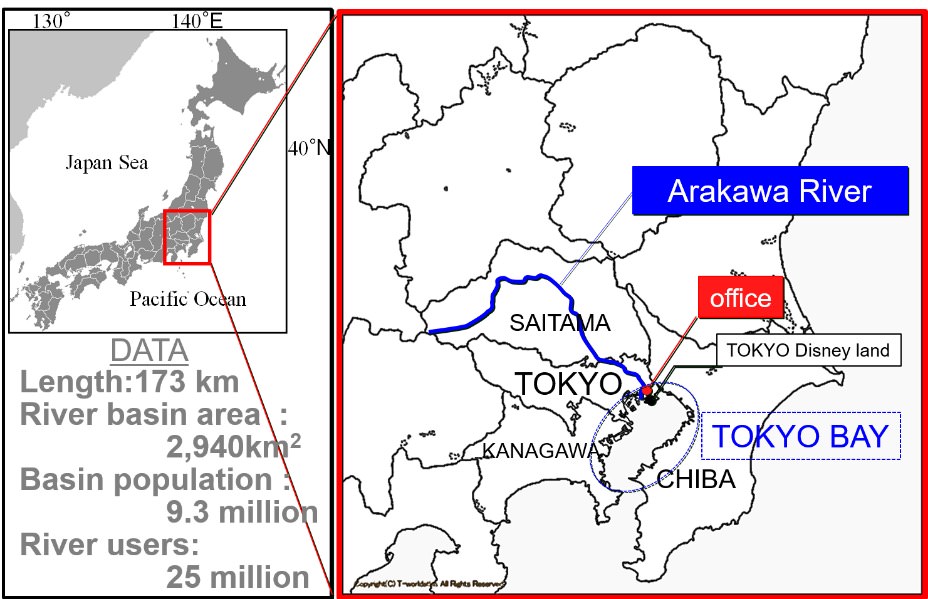
The Arakawa River, which runs through the Tokyo metropolitan area and into Tokyo Bay, is a very important river that benefits the lives of many people. About 10 million people live in its basin, and it provides them with potable water and nurtures many living things. The Arakawa riparian zone is bristling with plants and provides precious habitats for insects, birds, fish and other creatures. These living things, in turn, play a significant role that benefits the river. They help keep the Arakawa River water clean.
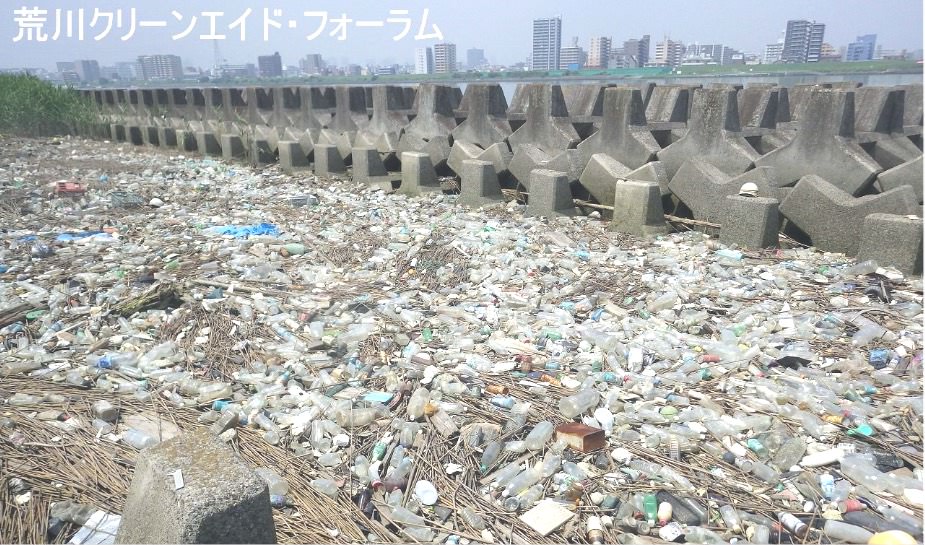
However, trash is accumulating among the reeds and rocks. The adverse impact that can have on the ecosystem cannot be overestimated. The river is now littered with things like countless plastic bottles and illegally-dumped large appliances, and some of the trash is giving off a rotten vegetation-like smell of slime. At this very moment, the ecosystem of the Arakawa River is crying out for help.
Data on the Arakawa River
- Length:
- 173km
- Area of the basin
- 2,940km2
- Population of basin
- 9.8 million (3rd in Japan)
- Population density in the basin (downstream area)
- About 9,800 people/km2 (Largest in Japan)
- Number of river users
- 25 million people per year (Largest class in Japan)
However, rubbish is accumulating between the reeds. The adverse impact this can have on the ecosystem cannot be overestimated.
We start by “PICKING UP”
Join forces and pick up trash in and around the Arakawa River to restore nature. This is what “Arakawa Clean-aid” is about.
Clean + Aid
Many different people pick up trash and think about environmental issues, such as garbage dumped in and around the river, water quality and nature restoration, in different parts of the high-water-channel, in order to bring back nature to the basin.
It has been more than 20 years since Arakawa Clean-aid was launched in 1994. During these years, the amount of bulky waste dumped in the riverbeds has decreased and reed fields have come back to life in some places. Nevertheless, the river is still subject to an endless flow of litters and requires continuous cleanup activities.
In recent years, this movement has expanded to involve participants of a wide range of ages, including elementary, junior high and high school students, and corporate employees who join Arakawa Clean-aid for periods of integrated study, as a volunteer program, and as a corporate social responsibility initiative.
The target of 150 cleanup sessions and 13 thousand participants per year has been reached
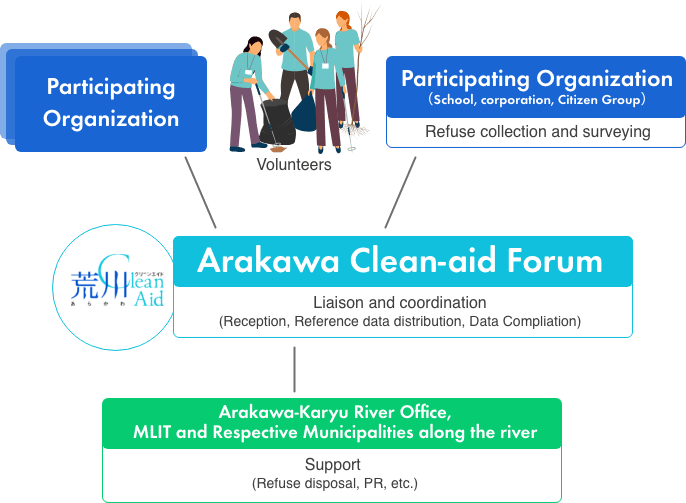
Arakawa Clean-aid is run by “participating organizations” (municipalities, businesses, schools, civic groups, and so on) that gather participants and organize volunteer cleanup activities in respective cleanup sessions (areas), mainly during Arakawa Clean-aid Months in autumn. These activities take place in a total of 150 different areas, from upstream Chichibu City to East Beach (Higashi Nagisa) of Tokyo Bay, and involve more than 10 thousand participants each year. During each session, participants count the numbers of litter items that they pick up. Collected litter is disposed of through cooperation with the municipalities, Arakawa-Karyu River Office (Ministry of Land, Infrastructure and Transport and Tourism) and other related parties. The Arakawa Clean-aid Forum, an NPO, gathers statistics on the litter collected in all cleanup sessions.
Increase awareness of the importance of environmental preservation through picking up rubbish!
The purpose of Arakawa Clean-aid is to raise awareness of the importance of environmental preservation among citizens by working in partnership with “administrators”, “businesses”, “municipalities” and other related parties and providing people with the opportunity to think about nature in and around the river and environmental issues presented by the river through the experience of picking up litter. This is sure to encourage citizens to participate more in improving the environment of this river.
Integrated activities are of vital importance in solving problems!
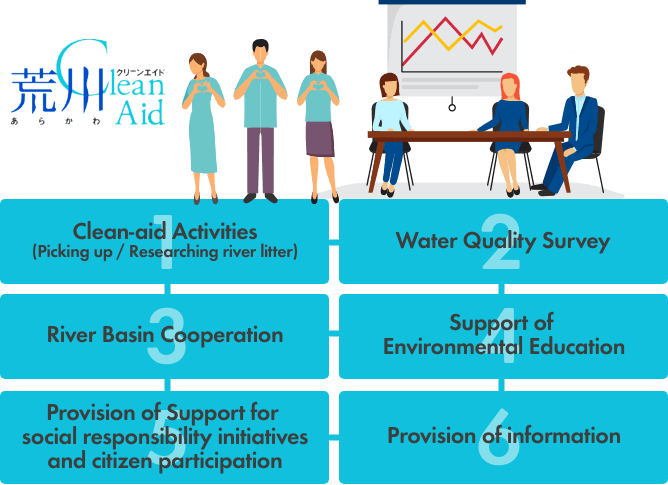
The river keeps on flowing, bringing us both blessings and cursing. The important thing is to grow close to, and interested in, the river and work to improve the environment of the river.
The Arakawa Clean-aid Forum, an NPO, strives to expand the network of people who are aware of the importance of protecting the environment of the river, as well as the environment of the earth, through a wide range of activities.
Introducing our main activities
We carry out a wide range of activities, most notably picking up and researching litter, to raise public awareness by addressing issues related to the Arakawa River environment in an integrated manner!
Clean-aid activities (picking up and researching litter)
-Picking up litter is an eye-opener-
Participants of Arakawa Clean-aid count the numbers of river litter items that they pick up by category. Identifying the types and numbers of litter items allows each participant to raise their awareness of the issue.
Moreover, the results of the research are translated into the development of measures targeted at minimizing the generation of waste to create a waste-free society. This is something more than mere cleanups. The major differences between Arakawa Clean-aid and general “cleanups” are
that:
– The aim is to restore nature.
– Participants count the numbers of litter items that they pick up.
River / marine litter problem as a social issue
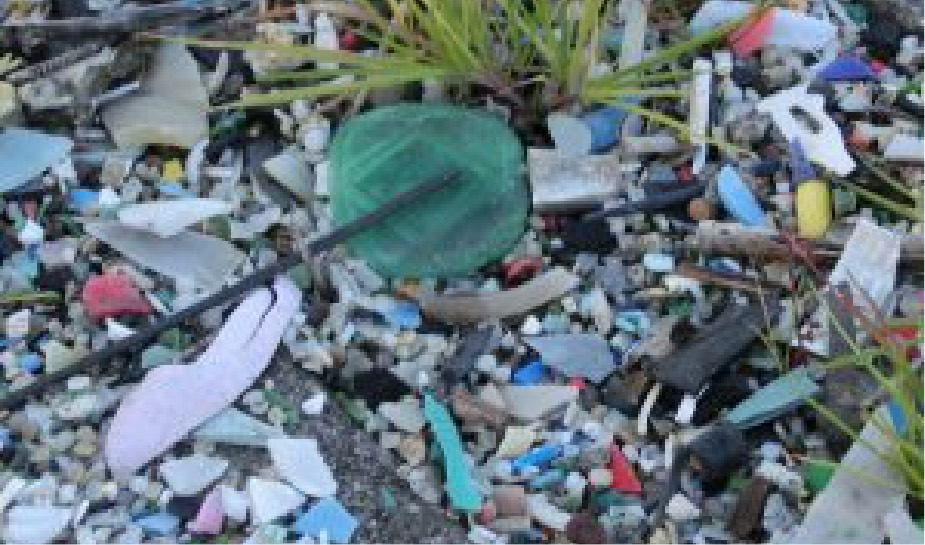
In recent years, the problem of river and marine trash has attracted attention as one of the most important global social tasks to deal with. River and marine trash not only impairs landscapes, but it also causes ill effects on the ecosystem. Plastic waste in particular has extremely adverse effects. Part of the trash such as fishing lines entangle and kill sea creatures. A worse thing is that plastic waste fragments become “microplastics” from the effects of wind, waves and ultraviolet rays. Such degraded plastic densely absorbs underwater hazardous chemicals and is inadvertently ingested by animals such as fish, seabirds, turtles, etc. Then, there is concern that microplastics are being conveyed through the food chain and are also affecting human diets.
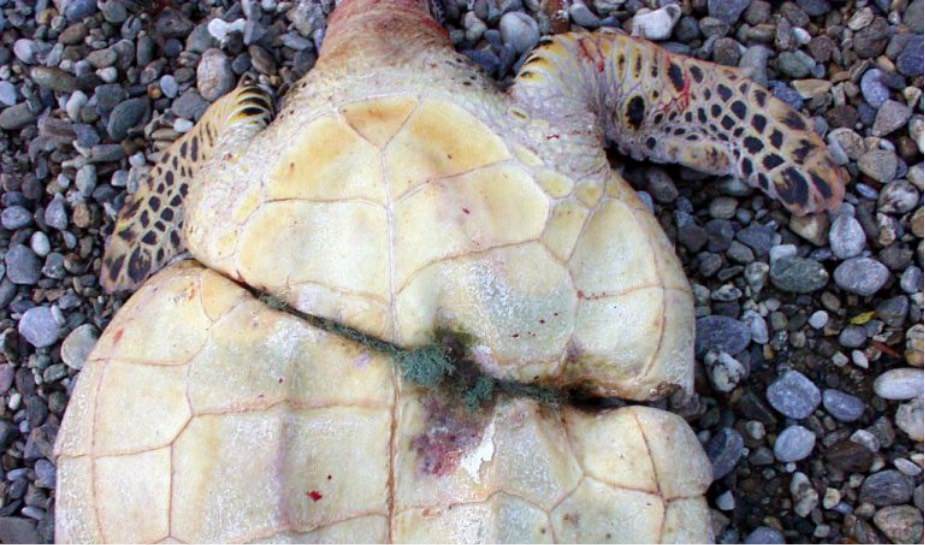
According to the Ocean Conservancy Report 2009, more than 50 to 80 percent of marine trash comes from urban areas. Waste materials, which are dumped in urban areas, end up in rivers and then drift out to the ocean. An incredible amount of trash that is drifting through riparian zones should be stopped as early as possible before it spreads out to the ocean and before it fragments into micro-plastics. The World Economic Forum and the Ellen MacArthur Foundation show in a report, “The New Plastics Economy: Rethinking the Future of Plastics,” that there could be more plastic than fish in the ocean (by weight) by 2050. Thus, River and marine trash is a most urgent social issue to resolve with every means available.
Support of environmental education
It is more important to have “fun” than simply “study”

We support waterfront environmental learning using the Arakawa River through activities such as providing support for integrated study classes of elementary and junior high schools, hosting instructor training courses and publishing “A Guide to Practicing Arakawa Gakushu” and “A Guide to Enjoying and Learning about the Arakawa River.”
In addition, we also provide nature observation programs, eco-tours and other programs to raise children who know how to safely play in and around the river.
Provision of support for corporate social responsibility initiatives and participation of citizens
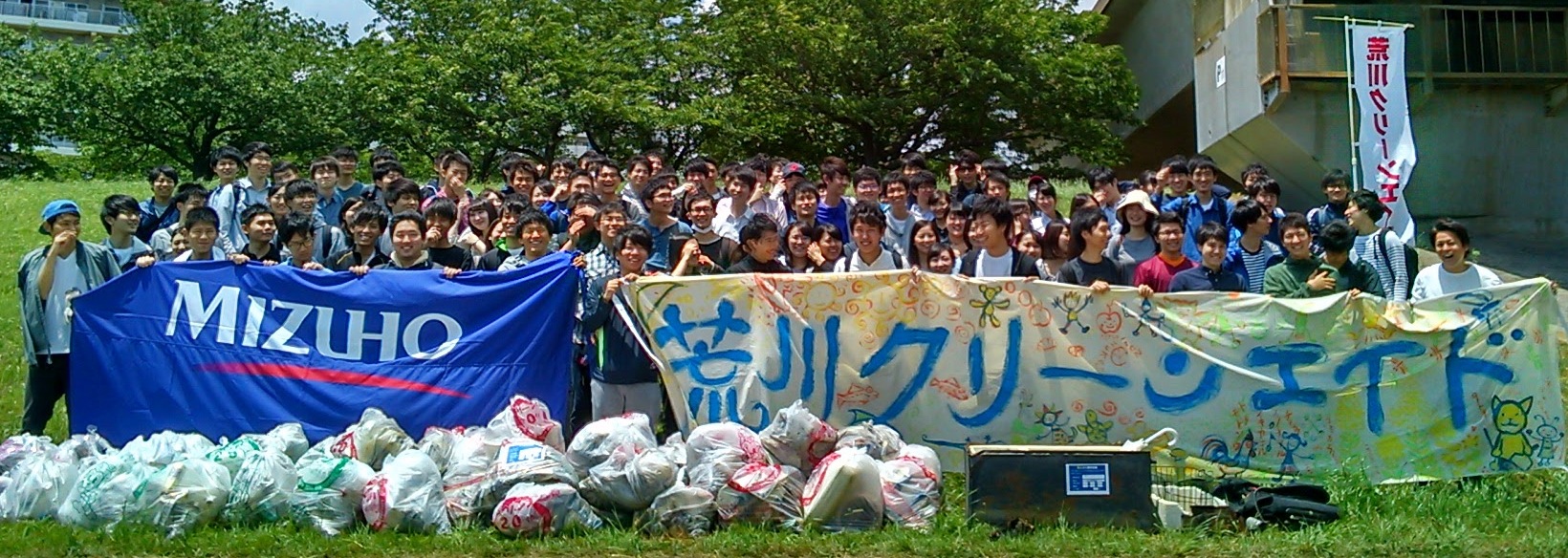
We provide the support you need by making the most of our more than 20 years of experience
We provide corporate and government employees and other people with opportunities to demonstrate their social responsibility through participating in Arakawa Clean-aid, training courses of various kinds, and other programs. In response to growing demand, we are now inviting more companies to take part in our employee training programs. For more information, please refer to the relevant materials we have prepared.
Save Biodiversity

Our lives are living through enjoying benefits from biodiversity. Biodiversity thus serves as a basis of the survival of human beings. In addition, biodiversity, as the particular assets of each region, also supports the diversity of unique regional culture. We remove non-native species such as a golden rods (Solidago altissima),Giant Ragweed (Ambrosia trifida) and burr cucumber (Sicyos angulatus) etc… at downstream of Arakawa river.
In addition, We understand that it is sometimes not good for preserving biodiversity to protect only specific species (the Secretary-General is a PhD. of ecological engineering). We conserve more species by conserving our habitats such as removing river litter, creating wetland, etc…






